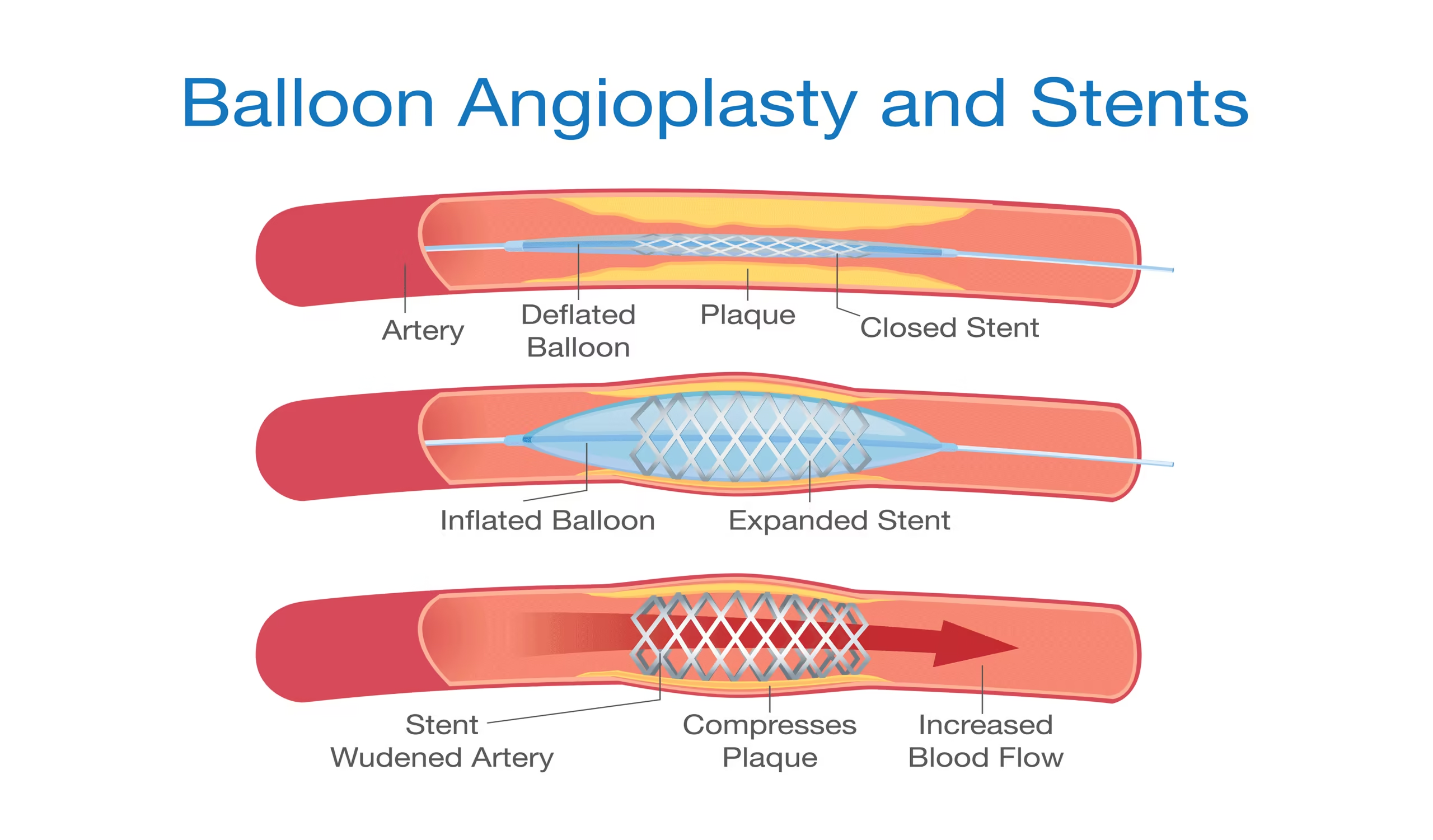
Behind the Curtain: What Happens During Coronary Angioplasty in Hyderabad?
If you or a loved one has been advised to undergo coronary angioplasty in Hyderabad, it’s natural to have questions. What does the procedure involve? Is it painful? What is the recovery like?
This guide explains the coronary angioplasty process step-by-step and why it’s essential to consult an experienced interventional cardiologist in Ameerpet, Begumpet, Banjara Hills, or Secunderabad.
For residents across Hyderabad seeking expert cardiac care, Dr. Sai Ravi Shanker, a senior interventional cardiologist in Ameerpet, brings over 25 years of trusted experience in performing complex heart procedures, including over 20,000 Cath Lab interventions.
What Is Coronary Angioplasty and Why Is It Done?
Coronary angioplasty, also known as percutaneous coronary intervention (PCI), is a non-surgical, minimally invasive procedure to open blocked or narrowed coronary arteries. This helps restore normal blood flow to the heart muscle, especially in patients with chest pain (angina), shortness of breath, or after a heart attack.
This lifesaving procedure is routinely performed by leading cardiologists like Dr. Sai Ravi Shanker, who is widely recognized as the best cardiologist in Banjara Hills and across Hyderabad for his expertise in complex coronary interventions.
Who Should Consider Coronary Angioplasty in Hyderabad?
You may need an angioplasty if:
Whether you’re searching for an interventional cardiologist in Secunderabad or Begumpet, it’s important to choose someone with hands-on experience in dealing with complicated cases.
Step-by-Step: What Happens During Coronary Angioplasty?
Patients visiting Aster Prime Hospitals in Ameerpet, where Dr. Sai Ravi Shanker is the Head of Department, receive world-class treatment using the latest technologies.
1. Hospital Admission & Preparation
You will be admitted a few hours before the procedure. After initial tests (like ECG and blood work), you’ll be prepped for the angioplasty. You’ll remain awake but sedated during the procedure.
2. Catheter Insertion
The procedure begins with the insertion of a catheter (a thin, flexible tube) into an artery in your wrist or groin. This is gently guided toward the heart.
3. Locating the Blockage
Using imaging tools like IVUS (Intravascular Ultrasound) or OCT (Optical Coherence Tomography)—both areas of Dr. Shanker’s expertise—the cardiologist identifies the exact site and severity of the blockage.
4. Balloon Inflation and Stenting
A small balloon is inflated at the blockage site to open up the artery. In most cases, a stent is placed to keep the artery open permanently.
5. Completion and Recovery
Once the blockage is treated, the catheter is removed, and pressure is applied to the entry site. Patients are monitored closely and typically discharged within 24 to 48 hours.
Post-Angioplasty Recovery Tips
Dr. Sai Ravi Shanker, a renowned interventional cardiologist in Begumpet and Hyderabad, emphasizes the importance of follow-up care. After angioplasty:
Why Hyderabad Residents Trust Dr. Sai Ravi Shanker
Patients across Ameerpet, Banjara Hills, Secunderabad, and Begumpet prefer Dr. Sai Ravi Shanker for his exceptional qualifications and patient-first approach.
Whether you're in central Hyderabad or surrounding localities, Dr. Shanker is just a short drive away. If you're looking for a trusted interventional cardiologist in Secunderabad or the best cardiologist in Banjara Hills, you're in safe hands.
Book a Consultation Today
If you’re experiencing symptoms like chest pain, breathlessness, or have a family history of heart disease, don’t delay. Early diagnosis and intervention can be lifesaving.
To consult Dr. Sai Ravi Shanker, a leading interventional cardiologist in Ameerpet, visit: www.drsairavishanker.com
Available at. Aster Prime Hospitals, Ameerpet, Hyderabad
